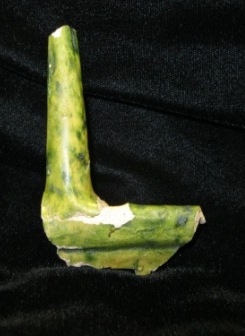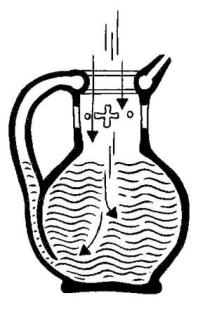Wessex Archaeology excavated a large site in Salisbury during the summer of 2013, which comprised a strip running across one of the medieval ‘chequers’ (blocks) from north (Bedwin Street) to south (Salt Lane). Various building foundations and backyard features were encountered, dating from the medieval and post-medieval periods. A large number of finds were recovered from the site, including quantities of pottery. Amongst this pottery, one piece is particularly interesting. It comes from the rim of a jug, but a jug with a difference. The fragment we have consists of a long, narrow, vertical spout, extending up from a hollow rim. Below the rim the body of the jug has a small, regular ‘cut out’. In other words, liquid could not be poured out of the jug in the normal way, or it would spill.
So what is it?
This is a particular kind of jug, known as a ‘puzzle jug’, made partly as a test of the potter’s skill, and partly as a test for the drinker, who has to work out how to get the liquid out of the jug without spilling it. The way it works is this: the jug has a hollow handle which runs from the lower body up to the hollow rim. There are usually two or three spouts extending from the rim, only one of which is actually functional. The drinker has to find the right spout and suck the liquid through it; sometimes a small airhole on the handle has to be blocked with the finger at the same time. The reconstruction below is redrawn from R. Coleman-Smith and T. Pearson’s Excavations in the Donyatt Potteries (1988).
Our puzzle jug is made of a white clay and is covered with a mottled green glaze. This distinctive colouring identifies it as a product of the pottery industry of the Surrey/Hampshire border, and it probably dates to the 16th century, although no other examples are yet known from this source.


